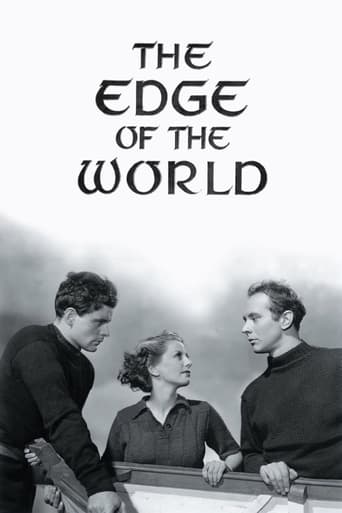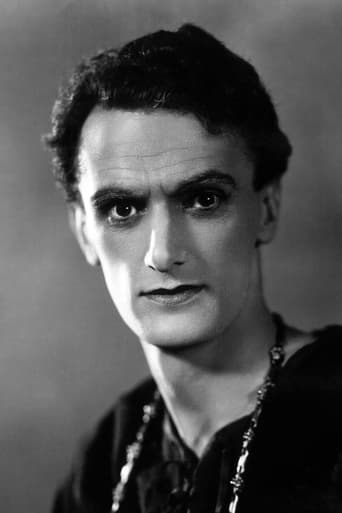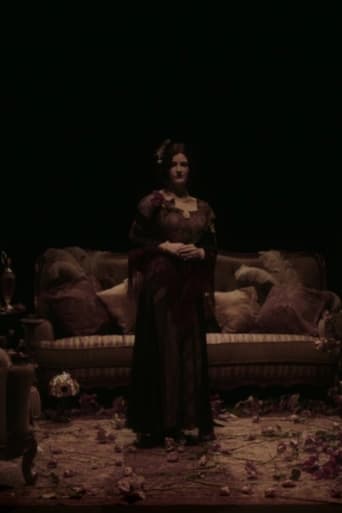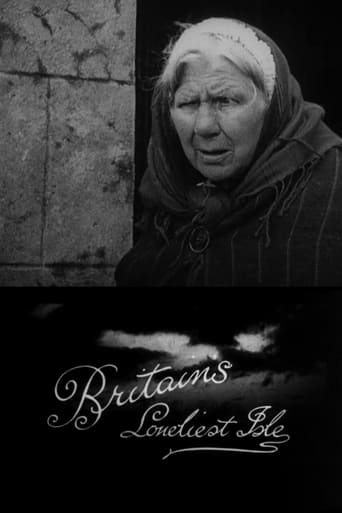The Edge of the World (1938)
A way of life is dying on a remote Scottish island, but some of the inhabitants resist evacuating to the mainland.
Watch Trailer
Cast


Similar titles
Reviews
Crappy film
Boring
This is a small, humorous movie in some ways, but it has a huge heart. What a nice experience.
It’s not bad or unwatchable but despite the amplitude of the spectacle, the end result is underwhelming.
Michael Powell is best known for the films he made with Emeric Pressburger under the brand name "The Archers", but "The Edge of the World" from 1937 is a solo project, predating his partnership with Pressburger. It was inspired by the evacuation of the remote Scottish archipelago of St Kilda in 1930. Here the island is named "Hirta", which is the same name as that of the main island of the St Kilda group, but it is relocated from the Hebrides to the Orkneys or Shetlands. (Permission to film on St Kilda itself was refused, so filming actually took place on Foula in the Shetlands, although that island was, and remains to this day, inhabited).A wealthy young couple, sailing around Scotland by yacht, arrive on the island where they discover abandoned cottages but no human inhabitants. They ask Andrew Gray, the skipper of their yacht and himself a native of the island, what happened, and he explains that the island has been deserted for ten years. He then tells them the story of how the population came to leave. The islanders were divided among themselves; some, including Andrew himself, wanted to stay whereas others, such as his close friend Robbie Manson, wanted to leave. Even families were split; Andrew's father James sided with Robbie, whereas Robbie's father Peter and his sister Ruth (who was also Andrew's sweetheart) were both among those determined to stay.The story told here is partly based upon the true story of the evacuation of St Kilda and is partly fictitious. As on the real St Kilda, the main factor which is drawing people away from the fictitious island of "Hirta" is the greater employment opportunities offered to young people on the mainland. There is also the fact that there are no medical facilities on the island. The people of Hirta are also concerned that competition from commercial trawlers is damaging the local fishing industry. (This was not a factor on the real St Kilda, where the rough and perilous seas meant that the local people did little fishing). As the younger generation gradually leave, this makes it more difficult for those remaining to follow their traditional way of life which relies on strong, fit young people to help with the fishing and crofting and to gather sea birds' eggs from the cliffs. (This was an important source of protein in their diet). Powell, born in Canterbury, may have been a native of southern England, but had a deep love of the Scottish highlands and islands; two of his later films with Pressburger, "The Spy in Black" and "I Know Where I'm Going!" were also set in the area. "The Edge of the World" can be seen as his tribute to the way of life of the local people, a life which Powell and his cast and crew shared for several months while on Foula. (No air service or regular ferry existed in 1937, meaning that they had to stay on the island for the whole length of the shoot).While "The Edge of the World" tells a fictional story, it has a documentary feel to it, reminiscent of the documentary shorts such as "The Islanders" which were being produced by the GPO Film Unit around the same time. At this period life on remote islands was hard and lonely; the islanders of Foula, like those of St Kilda, had no gas, electricity or running water. They had never seen a car, an aircraft or even a bicycle. There were no radios and no postal service; their only way of communicating with the outside world was to launch a letter into the sea in a small wooden vessel, hoping it would be picked up by a passing ship. (They make use of this method during the film). The characters in the film refer to the mainland as "Scotland", as through Scotland were somewhere foreign, not the country where they live.Powell shows us not only the hardships and dangers of their life but also their simple religious faith, their democratic ways (all decisions of importance are taken by an island Parliament) and their independent spirit. He also captures, in some striking black- and-white photography, the austere natural beauty of the island. The film may not have the complexity of some of his "Archers" films, but it has a beauty, a tragic power and a poetic simplicity which make it unusual in the annals of British film-making, matched in these respects perhaps only by Bryan Forbes' "Whistle Down the Wind". 9/10A goof. The main story is said to have happened ten years ago, presumably in 1927, but the characters refer to the evacuation of St Kilda, which did not occur until 1930.
Well written, well acted, well filmed, spectacular scenery. Loved it. Delighted Netflix had it on DVD. The film did not shrink from tragedy, was not melodramatic when portraying reconciliation, and touched on some timeless themes. It was easy to identify with the characters. The island scenery is unforgettable. The filming locations including closeups were well chosen and well filmed. I recognized one of the main characters from his role in Sergeant York. I very much enjoyed the director and a couple of the actors returning to the island 40 years later and reminiscing. A well done film. I will recommend it to friends including families without hesitation.
I first saw this film in 2002 to view locations on the Isle of Foula for a book I was working on, I have to admit to having never heard of the movie prior to then,so thanks to Martin Scorsese & Thelma Schoonmaker (Powell's widow) for the fantastic restoration of this 1937 classic.The film was based on the evacuation of St.Kilda in the Outer Hebrides of Scotland, and having been refused permission to film on St.Kilda for fear of disturbing the birdlife,Mr Powell sought out another island. Foula was chosen for its resemblance to St.kilda and he took the whole film unit there for 5 months between June and October 1936.To make such a film under such conditions on an remote Island such as Foula, West of Shetland Isles at that time must have taken great courage and determination. Continuous battles with the elements,the midges,the equipment & supply failures, must have all took their toll, but Mr Powell and his intrepid band of actors & film crew all gave 100% to produce this masterpiece of cinematography.Dangerous sequences on the cliffs were all done by the actors themselves not stuntmen, and the cameramen also had their work cut out to get in close for dramatic shots, (No power zoom lens in those days) Some great pan shots and lapse dissolves are used and classic music accompaniment makes this an unforgettable movie.Whilst on the Isle one of the Key actors John Laurie broke his collarbone, it was thought the production would have to find a replacement, but stubborn Laurie returned to the set in a little over a month and continued with filming.Dedication to the end.If you don't see another movie all year, see the 'EDGE OF THE WORLD' and wonder how some of the shots were done, then listen to Daniel Day Lewis' & Thelma Schoonmaker's comments on the DVD to hear how they did made it.
Just seen this film at the National Film Institute in London and was surprised by the number of people that had come to see a 1930s black and white film based on a remote Scottish island. I went because I have always been a fan of Powell & Pressburger but had never seen anything from this era (also, my wife & daughter had gone to see the Phantom of the Opera stage musical and I needed something to do!).The film was a very pleasant surprise. Whilst it shared many aspects of 1930s cinema (some stilted acting, dodgy accents, melodrama and a relatively corny plot) the overall feel was of a story well told, an accurate picture of an island community (**SPOILER?**) whose way of life is about to end forever and, most surprisingly, no sentimentalism - those of a very timid nature may even be slightly upset by some of the dialogue. Before the film an even older silent documentary about life on St Kilda was shown and this highlighted how accurate the feel of The Edge of the World was.This film is never going to get anyone's heart pounding with excitement, but there are moments of real tension and the story is very strong. Despite the comments above this film had a strong cast, although John Laurie, in a supporting role, stole much of the stars' thunder and Finlay Currie provided his usual strong and benign presence.Unless you have an aversion to films that do not rely totally on big action and special effects, I would recommend this film, although getting to see it may be a problem.This was my first visit to the NFI and on the strength of this film, I will be going back.









